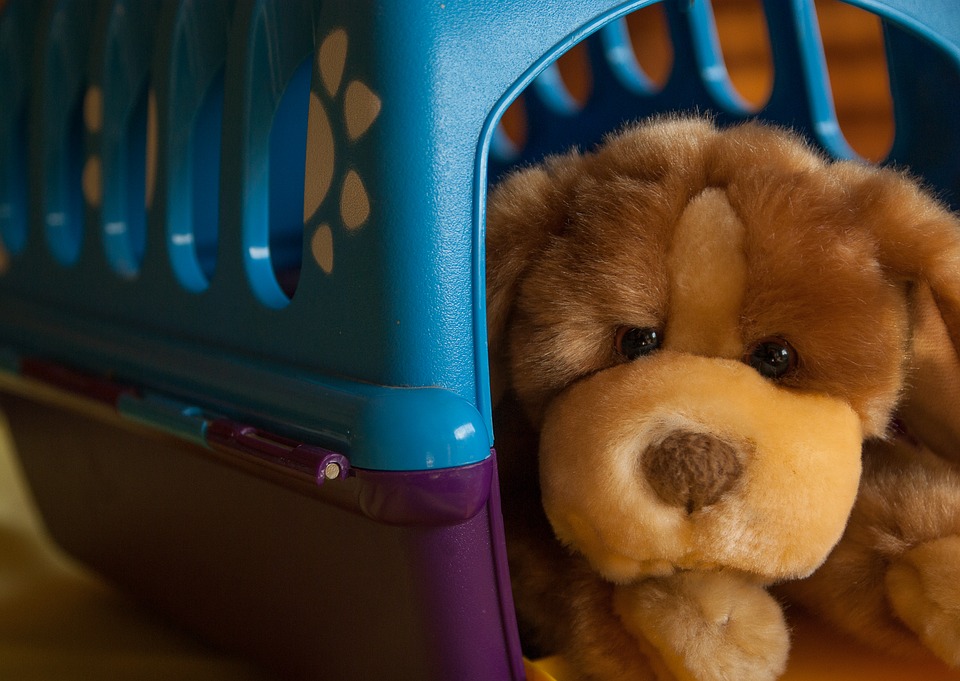Dog crates, sometimes referred to as dog cages, are safe and secure areas where a dog can go for short periods of time. They can be used as training aids or for sleeping purposes and are usually stored in the home. There are many different types of cages depending on the size and breed of your dog, and whether transportation is necessary. Here we are going to take a look at the most important factors when it comes to choosing the correct crate for your pooch.
Why do I need a crate?
There are various reasons why you may need a crate for your dog and it is important to analyze these as the type of crate required may change. Your vet may have advised you to buy a crate to let your dog recuperate in after an operation, and this will be a vastly different type of crate to one that is used for general transport or one that is used for sleeping. Maybe fido is a terror and needs confining when nobody is at home, or maybe he is a bit of a wimp and needs his own space where he feels safe and secure? It is important to identify your dog’s needs as a first step when choosing a crate.
Size
Obviously housing a Great Dane in a shoebox or a chihuahua in a shipping container is not going to be suitable for either animal, so you need to find something that will leave your dog feeling happy and at home. Remember that if you bought your dog as a puppy it is going to grow, so thinking ahead will save you a few pennies. If you need your crate for house training it should not be too large or this will simply distract your hound, and your training will become a fruitless task.
Material
There are many different types of material available for dog crates. If you are looking for something easy to transport or you are planning to go camping, you may want to consider a soft-sided cage that can be easily folded up and stored. This will also provide plenty of ventilation and allow your pet a good view of their surroundings. These types of crates, however, would not be practical if you have a Doberman or an Alsation, so you should be looking for strong crates for dogs of this breed, made out of wire mesh or wood. Some of these mesh cages can also be folded up to allow ease of storage and transportation. Plastic, though, is not a good material for a cage, as dogs, whatever their age, have a tendency to chew, so you may find that you have more plastic and less cage before long!

Design
It is important to understand the temperament of your dog when assessing the design of a crate. If you have an overly hyperactive dog such as a Jack Russel, then it is best to make sure there are no sharp edges where it can hurt itself jumping around. The floor should also be comfortable and should not include material that can be easily ripped or torn. If your dog likes to sleep it might be worth considering its privacy and investing in a crate that has roll down windows or blinds. On a more personal level you may want to make sure that the crate compliments the rest of the design of your living room or kitchen.
Accessories
Dogs love to play and entertain themselves so it pays to choose a cage that will allow you to accessorize it with your dog’s favorite distractions. You may want to add some soft bedding, or a bowl in case it gets thirsty in the middle of summer. If your dog likes to bite or scratch give it some rope or suchlike material to allow it to indulge itself. Really you can add anything that will give your furry friend a better quality of life.
As we have seen there are many options when it comes to choosing the right cage for your dog, but what is most important to bear in mind is that it should always provide a safe and secure environment, somewhere where the animal will feel at home with minimal stress. If you are using it as a training aid then if all goes well the dog will see the cage as its happy place, and will often take itself inside to relax. Remember the happier the dog the happier you will be as barking will be kept to a minimum and you will find less disruption in your household.

